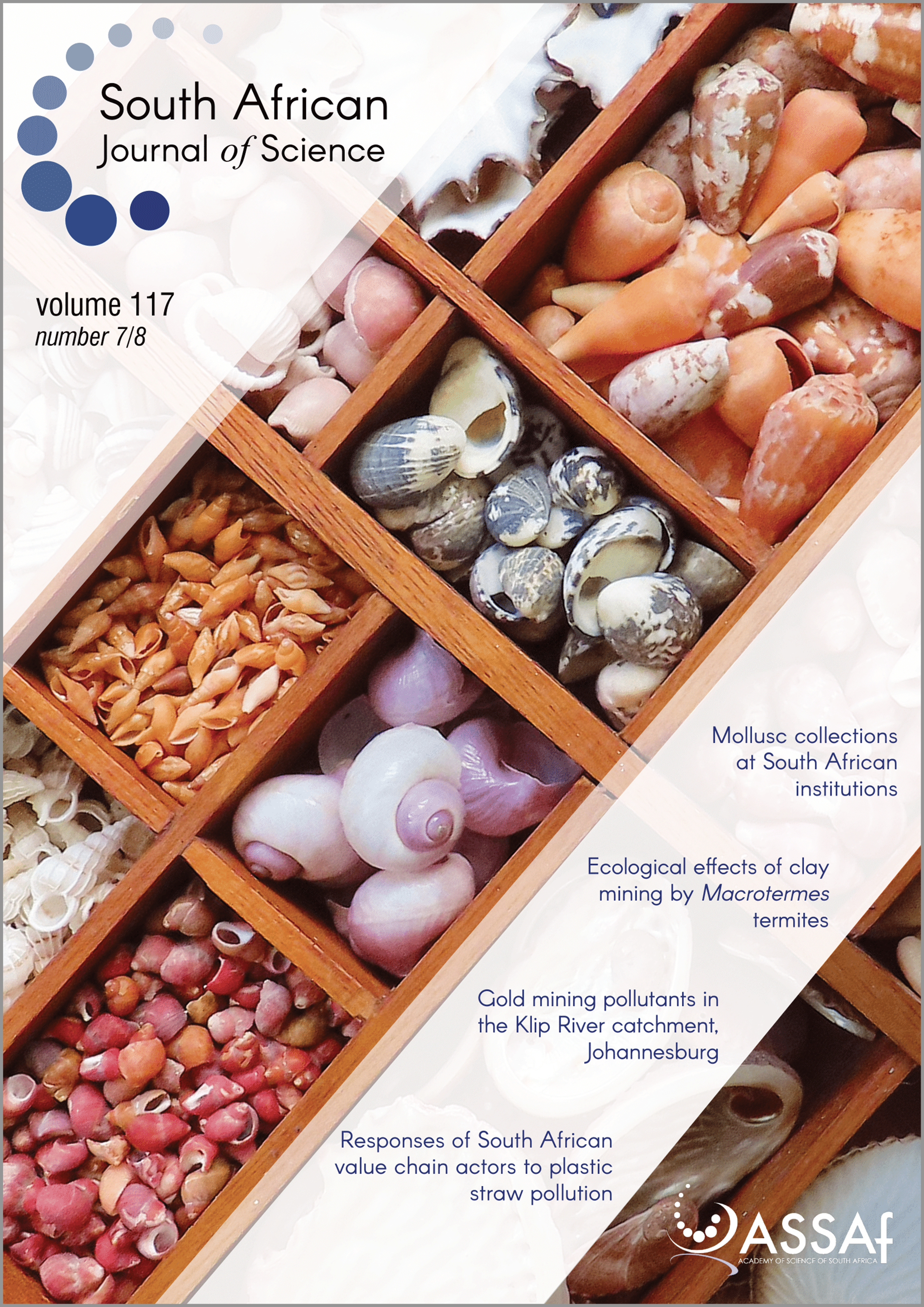Diverse trends in observed pan evaporation in South Africa suggest multiple interacting drivers
DOI:
https://doi.org/10.17159/sajs.2021/7900Keywords:
pan evaporation trends, evaporation paradox, global stilling, fetch conditionsAbstract
Planning for future water resource management in a warming climate is confounded when an expectation of increasing evaporation from open water surfaces with global warming is contradicted by observations of secular declines of pan evaporation. Decreasing pan evaporation has been observed globally – a trend which has been attributed variously to declines in wind run (‘global stilling’), declines in radiation (‘global dimming’) and increases in ambient humidity. This contrast between expectation and observation is known as the ‘evaporation paradox’. We evaluated trends in Symons pan evaporation from 154 pans across South Africa. Whilst 59 pans (38% of the 154) showed a statistically significant decrease in observed evaporation rates (p≤0.05), 30 (20%) showed an increase, and 65 (42%) showed no change. These results do not support simple attributions of trends to a common global cause. There is no spatially coherent pattern to trends across South Africa, suggesting that shifts in local drivers of evaporation confound expectations of secular trends due to global drivers. Changes in fetch conditions of the Symons pan installations may be implicated, whereby increasing tree density (through afforestation, alien plant invasion and woody thickening) increases surface friction, reducing wind run, and/or irrigation nearby, increasing local humidity. Correct attribution of the evaporation paradox to reduced wind run in South Africa must consider changing local conditions. Increased tree cover has been observed near a third of the South African Symons pans. Observed evaporation increases for one fifth of pans may implicate expected global drivers for pans where local fetch conditions have remained relatively constant.
Significance:
- Observed trends in Symons pan evaporation data for stations across South Africa comprise significant decreases (38% of stations), no change (42%) and significant increases (20%), with no clear geographic bias or coherency in the distribution of these trends.
- The observed diversity in trends appears to reflect local and global drivers, with land-cover changes emerging as a likely dominant local driver via friction-induced reductions in wind-run, possibly resolving the ‘evaporation paradox’.
- Observed trends in pan evaporation data may only be of value in testing for the impact of global drivers, such as global warming or global stilling, if local effects are accounted for. Caution is urged when using pan evaporation data for water resource planning.
- Attribution of observed trends requires a case-by-case assessment of local to regional land-cover and land-use changes, in addition to global influences.
Published
Issue
Section
License

All articles are published under a Creative Commons Attribution 4.0 International Licence
Copyright is retained by the authors. Readers are welcome to reproduce, share and adapt the content without permission provided the source is attributed.
Disclaimer: The publisher and editors accept no responsibility for statements made by the authors
How to Cite
- Abstract 1615
- PDF 1220
- EPUB 181
- XML 185












.png)